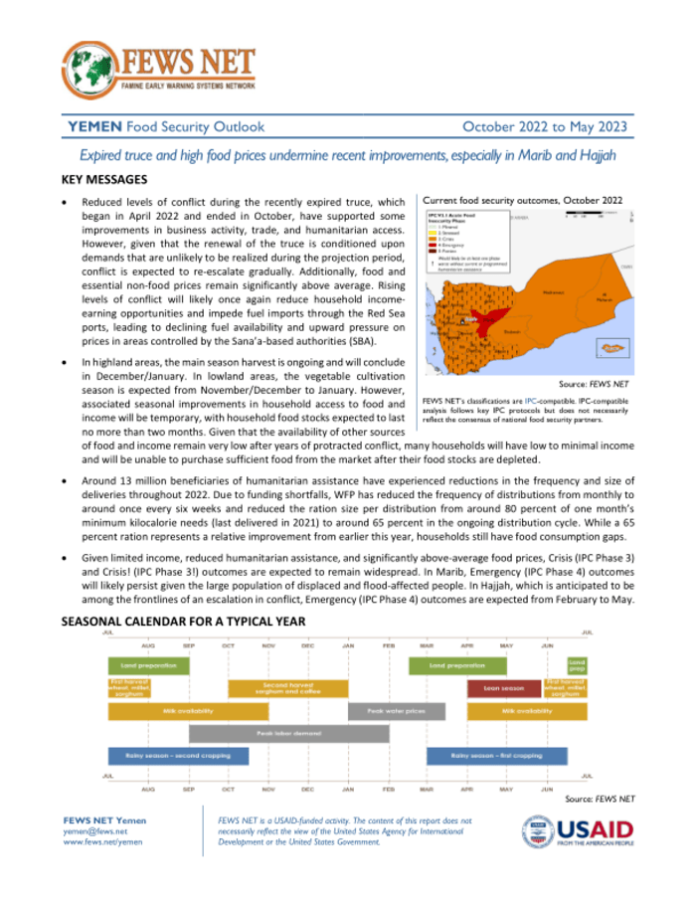Attachments
Expired truce and high food prices undermine recent improvements, especially in Marib and Hajjah
KEY MESSAGES
• Reduced levels of conflict during the recently expired truce, which began in April 2022 and ended in October, have supported some improvements in business activity, trade, and humanitarian access. However, given that the renewal of the truce is conditioned upon demands that are unlikely to be realized during the projection period, conflict is expected to re-escalate gradually. Additionally, food and essential non-food prices remain significantly above average. Rising levels of conflict will likely once again reduce household income-earning opportunities and impede fuel imports through the Red Sea ports, leading to declining fuel availability and upward pressure on prices in areas controlled by the Sana’a-based authorities (SBA).
• In highland areas, the main season harvest is ongoing and will conclude in December/January. In lowland areas, the vegetable cultivation season is expected from November/December to January. However, associated seasonal improvements in household access to food and income will be temporary, with household food stocks expected to last no more than two months. Given that the availability of other sources of food and income remain very low after years of protracted conflict, many households will have low to minimal income and will be unable to purchase sufficient food from the market after their food stocks are depleted.
• Around 13 million beneficiaries of humanitarian assistance have experienced reductions in the frequency and size of deliveries throughout 2022. Due to funding shortfalls, WFP has reduced the frequency of distributions from monthly to around once every six weeks and reduced the ration size per distribution from around 80 percent of one month’s minimum kilocalorie needs (last delivered in 2021) to around 65 percent in the ongoing distribution cycle. While a 65 percent ration represents a relative improvement from earlier this year, households still have food consumption gaps.
• Given limited income, reduced humanitarian assistance, and significantly above-average food prices, Crisis (IPC Phase 3) and Crisis! (IPC Phase 3!) Outcomes are expected to remain widespread. In Marib, Emergency (IPC Phase 4) outcomes will likely persist given the large population of displaced and flood-affected people. In Hajjah, which is anticipated to be among the frontlines of an escalation in conflict, Emergency (IPC Phase 4) outcomes are expected from February to May.

